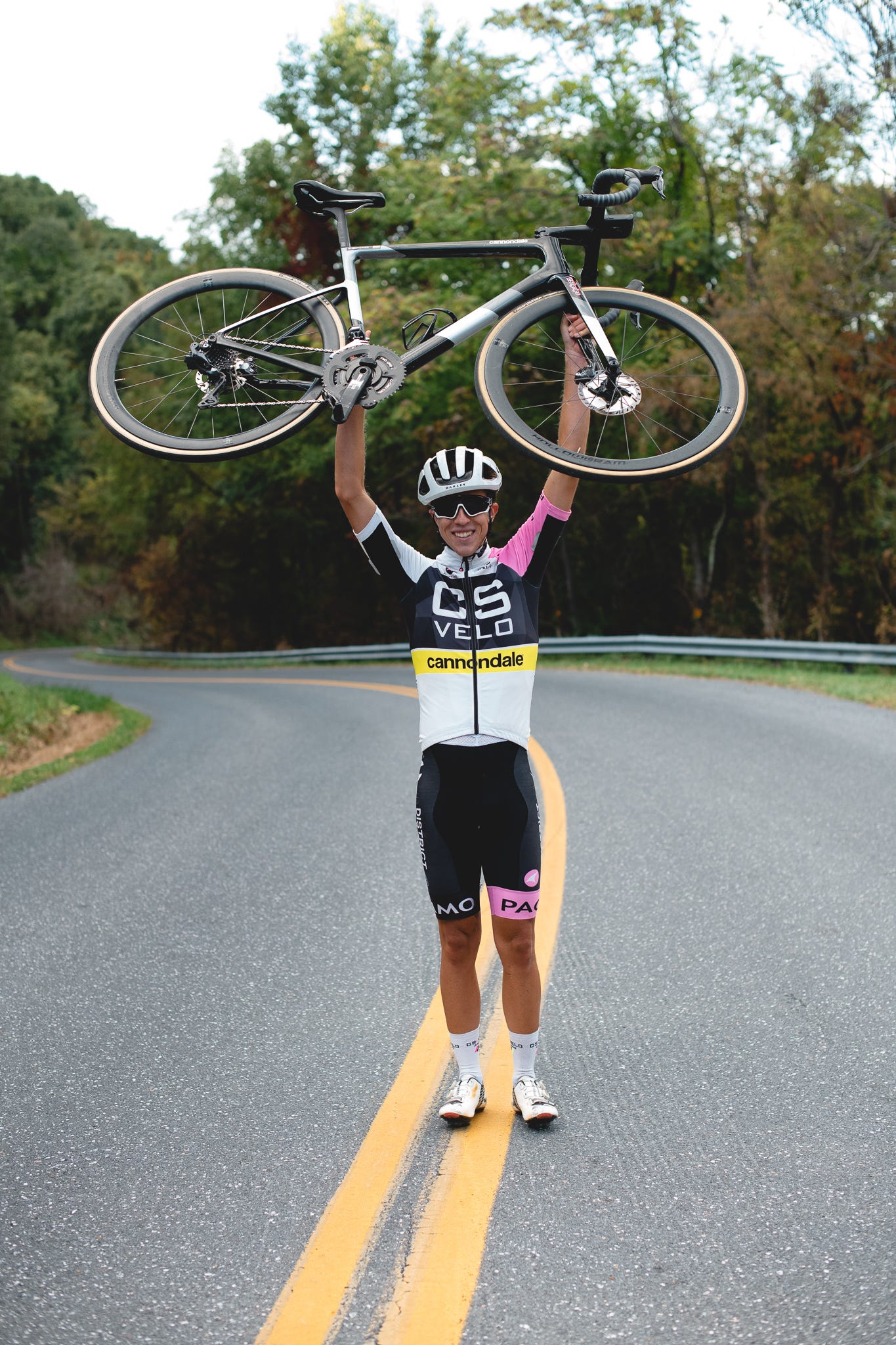
Courtesy of Hammerhead
- 27-year-old engineer Sean Gardner biked the elevation of Mount Everest in under 7 hours, breaking a world record.
- “Everesting” has gained traction during the coronavirus pandemic, since it can be done anywhere with a hill and also on foot.
- Gardner achieved the record on his second attempt, fueling with the sugar equivalent of more than 30 Snickers bars.
- “If you can find something you enjoy that’s physically active,” he told Insider, “the motivation will take care of itself.”
- Visit Insider’s homepage for more stories.
When Sean Gardner broke the world record for Everesting – or cycling the grueling height of Mount Everest, 29,028 feet, at record speed – there was no finish-line tape to break or post-race spread of bagels and beer.
Gardner, a 27-year-old mechanical engineer in Richmond, Virginia, wasn’t even sure he’d crossed the invisible finish line, since there was a little room for error in the route he’d plotted and the finalized stats of his ride would take time to fully load.
It wasn’t until Gardner, then 26, shoveled his bike and burnt-out quads into the car that he began to realize he’d done something no one else had. Along the way home, his phone pinged with congratulatory messages from fellow riders, who saw the results of his pursuit appear on Strava, an app that tracks physical activity and allows friends, strangers, and professional athletes to follow – and compete with – each other.
“It was pretty anticlimactic,” said Gardner, who talked to Insider through representatives of Hammerhead’s Karoo 2, the new GPS cycling device he used to find his route, track his performance in real-time, and upload the results to Strava.
Of course, he didn’t mean that literally. Gardner’s October 2020 ride included climbing up (and tearing down) the same steep 1.1-kilometer hill near Luray, Virginia, 53 times. The effort took him 6 hours, 59 minutes, and 38 seconds, making him the first to “Everest” in under 7 hours.
The previous record holder, the former professional cyclist Ronan McLaughlin from Ireland, achieved a time of 7:04:41 on July 30 - nearly 23 minutes faster than his predecessor, Alberto Contador, a Tour de France champion who'd set a record just three weeks prior.
But no one has eclipsed Gardner's time yet. And, unlike Gardner, a self-described "minor league" professional cyclist who trains at 5 am before heading to his 9-to-5 at an electrical utility company, most past record-holders are world tour cyclists.
After his accomplishments, they were applauding him on social media and inviting him to join them on videos and podcasts. Connecting with the sport's greats, Gardner said, "was pretty cool."
Gardner burned 7,500 calories, and fueled with as much sugar as is in 30 Snickers bars
Theoretically, anyone can Everest. It's free and can also be accomplished on foot. All it requires is for challenge-seekers to "pick any hill, anywhere in the world and complete repeats of it in a single activity until you climb 8,848m - the equivalent height of Mt Everest," according to Hells 500, the organization that tracks and certifies Everesting attempts.
To date, the organization says, 14,462 have completed an Everest of some form, 9,902 on bike. "It can take seven hours, and I've seen people take 20 hours," Gardner said.
Physically and mentally, the feat takes extraordinary strength, endurance, and grit. Gardner estimates his climb burned about 7,500 calories, which he fueled largely with high-sugar energy gels that packed a total of more than 800 grams of sugar - the amount in 30 regular-sized Snickers bars.
"I definitely didn't want any sweet stuff after that," said Gardner, who ate an Indian dish for his first post-race meal.
Gardner's effort covered over 72 miles, though Everesters who choose a less-steep hill will cover more ground in order to achieve the same elevation.
"I was never really out of breath and the legs never necessarily burned, it was more of this deep fatigue and just the days after, the energy levels were low," he said. Not that it was anywhere near easy: doing the same thing for seven hours was exhausting, physically and mentally.
"Toward the beginning, it was like reading a children's book," Gardner said of the mental effort the ride took. "Then it progressed to reading a dictionary. Toward the end, it was like reading a foreign high-level textbook."
He focused on getting to the next landmark - that mailbox, that turn, and, notably, his parents with claps and snacks at the top of the hill - to keep his head in the game. "That kept me from using my own mind against myself and going down the rabbit hole of thinking, 'I can't do this,'" Gardner said.

Gardner's world-record-setting attempt was his second try
Everesting has gained traction during the coronavirus pandemic, Gardner said, with most road races cancelled, many gyms closed, and more people at home looking for creative ways to stay motivated to move.
For Gardner, who competes for the pro team CS Velo Racing, the inspiration to attempt the challenge came after a couple of his teammates completed it. "Oh that could be fun," he said he thought.
Gardner didn't change his training routine much to prepare; he'd been riding steadily all summer anyway.
On his first attempt, though, he fueled with solid foods like peanut-butter-and-jelly sandwiches, Pop-Tarts, cookies, and gummy bears. "It ended up being too hard of an effort to down a peanut-butter-and-jelly sandwich at 60 miles an hour while breathing really hard," he said.
About halfway through he hit a wall, but still broke the US record and finished just about 25 minutes behind the world-record holder at the time.
"I kind of joked with some of my teammates and friends I either wanted to be a lot farther away or get the record, because if I was close enough I'd have to go for the 2nd attempt," he said.
Which, of course, is what he did. The second time, Gardner found a different hill with a steeper climb but a shorter distance overall. He switched out the sugary food for sugary energy gels and drinks. He also rode the course a few times, and parts of it a few other times, testing out different paces and gears and then calculating what could be both sustainable and record-breaking.
Gardner says he doesn't necessarily need motivation to train so intensely and regularly, and that people who struggle to get or stay active should focus on finding what they like to do, whether it's walking with a friend or taking on an epic challenge.
"If you can find something you enjoy that's physically active," he said, "the motivation will take care of itself."
- Read more:
- This personal trainer just completed 730 burpees in an hour, earning a Guinness World Record
- This woman ran 144 miles in 48 hours, all around a 1-mile track. Here's how she survived it.
- We don't need gyms to reopen. We never really needed them in the first place.
- Nutrition experts share why they think keto is one of the worst diets - even the less restrictive 'modified' version

